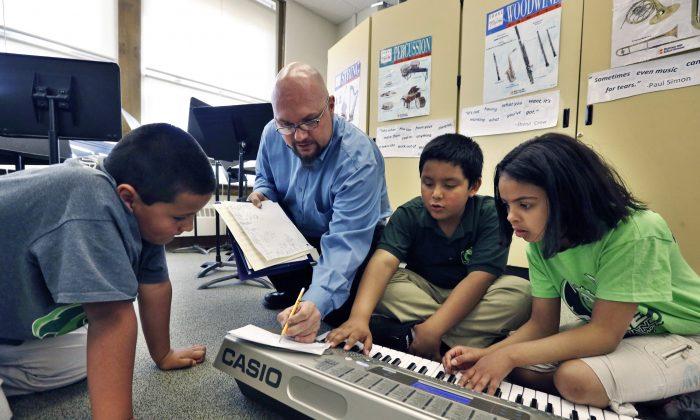NEW YORK—When City Comptroller Scott Stringer released his report demonstrating a lack of art teachers in schools, the Manhattan borough president took a closer look to find out which schools needed help. What she found is that after years of neglect, there are a lot of gaps to fill.
Stringer’s April report found that every fifth middle school in the city lacked a full-time certified arts teacher, and some 13 percent of schools had no art teacher at all.
But the numbers didn’t add up for Manhattan Borough President Gale Brewer.
Stringer’s report stated 83 Manhattan schools had no full-time certified art teacher last year. Brewer’s office surveyed the schools and found that 17 of those Stringer identified have art teachers on staff now. The number can also be higher, as only about half the schools responded to the survey.
Workarounds
The survey also revealed the diverse approaches schools take toward arts education.
Over two-thirds of Manhattan schools reported last year they don’t have enough money for arts, according to the city’s Education Department. Schools used to have a dedicated budget for art teachers and equipment, and partnerships with arts and cultural services. But starting in 2002 the budget was cut. Then, in 2007, it was dissolved into the general school budget.
Through the survey Brewer learned that schools use creative ways to work around the lack of funding, such as securing federal grants, working out partnerships with cultural institutions, or having arts taught by a teacher who lacks arts certification, but is still adept at the subject.
But not every school gives art such a priority. “It’s an afterthought,” lamented an unidentified high school arts liaison, according to the borough president office’s report released Monday.
Stringer’s report argues the city cut the budget to focus more on English and math instruction because President George W. Bush’s No Child Left Behind Act required annual improvement on math and English standardized tests.
Brewer’s report concurs, stating that it was common to hear about “arts education taking a backseat to subjects like ELA [English Language Arts] and math.”
According to state law, every student in seventh and eighth grades must receive music and visual arts classes from a qualified teacher. There’s also a mandate for arts instruction in high school.
But Brewer’s report argues that some schools just “feign compliance” and don’t really focus on quality.
Mayor Bill de Blasio put $23 million for school arts in next year’s budget. It is not yet clear how the money is going to be used.
Brewer recommended restoring arts-dedicated funding. Even if a small amount is mandated, it can give principals an incentive to focus more on the subject.






Friends Read Free